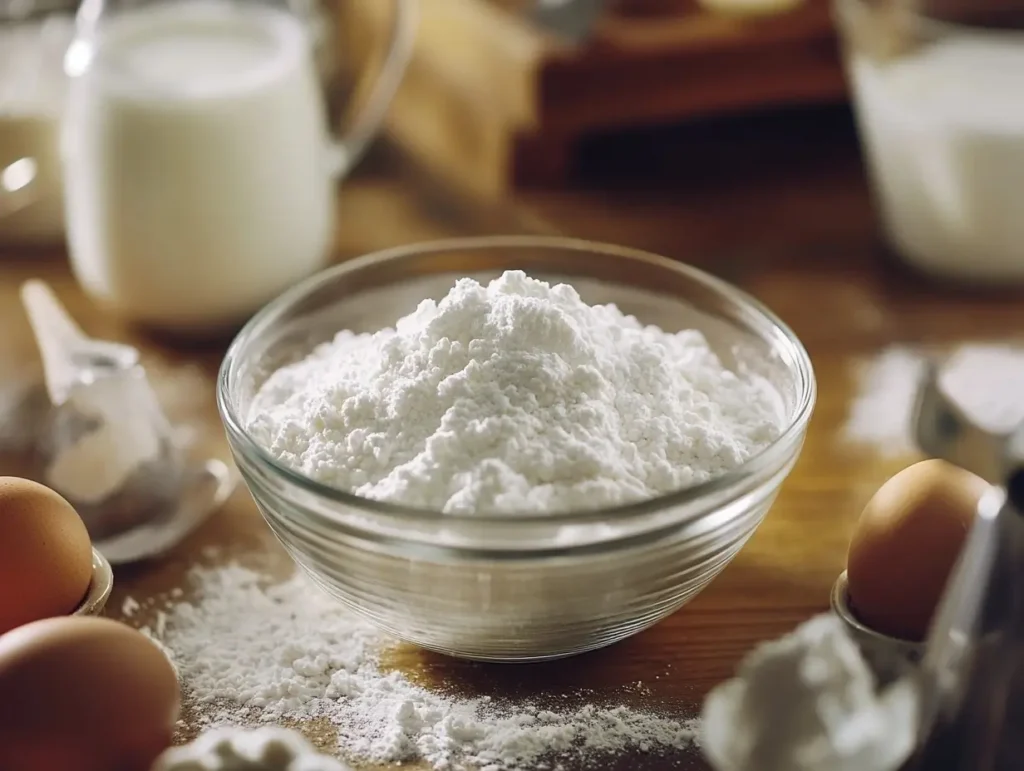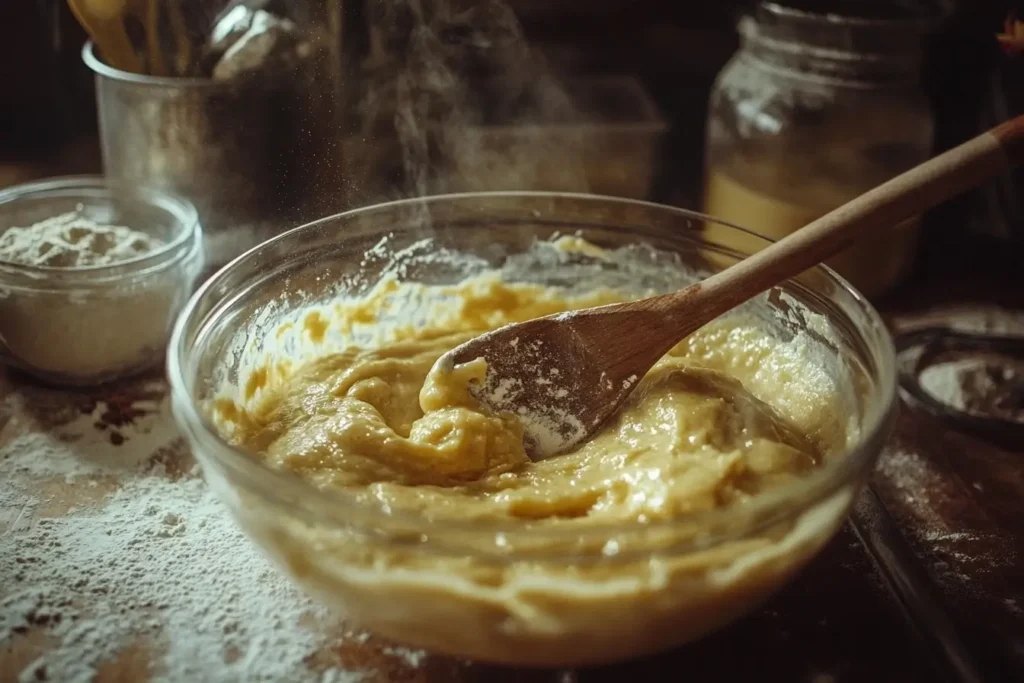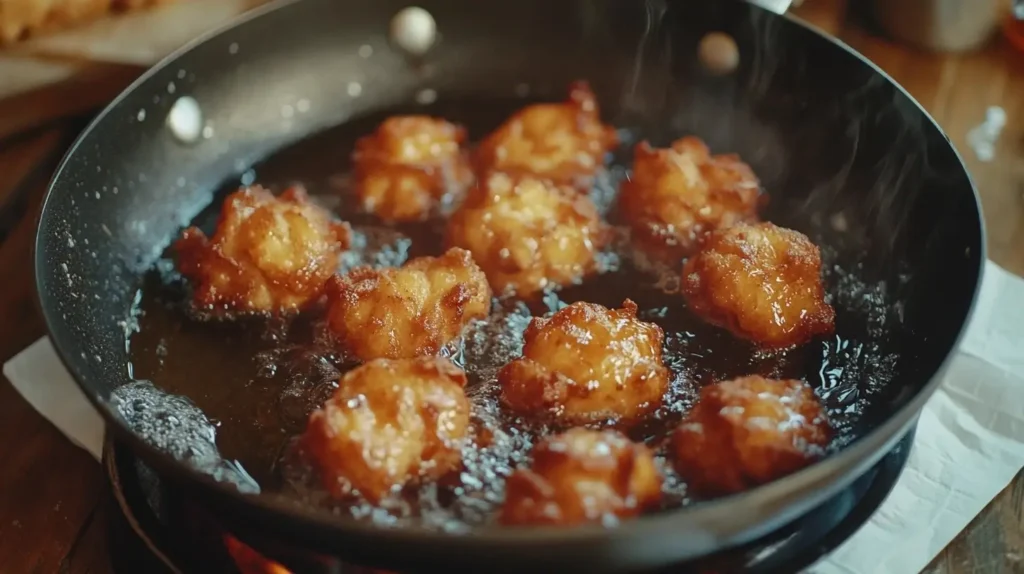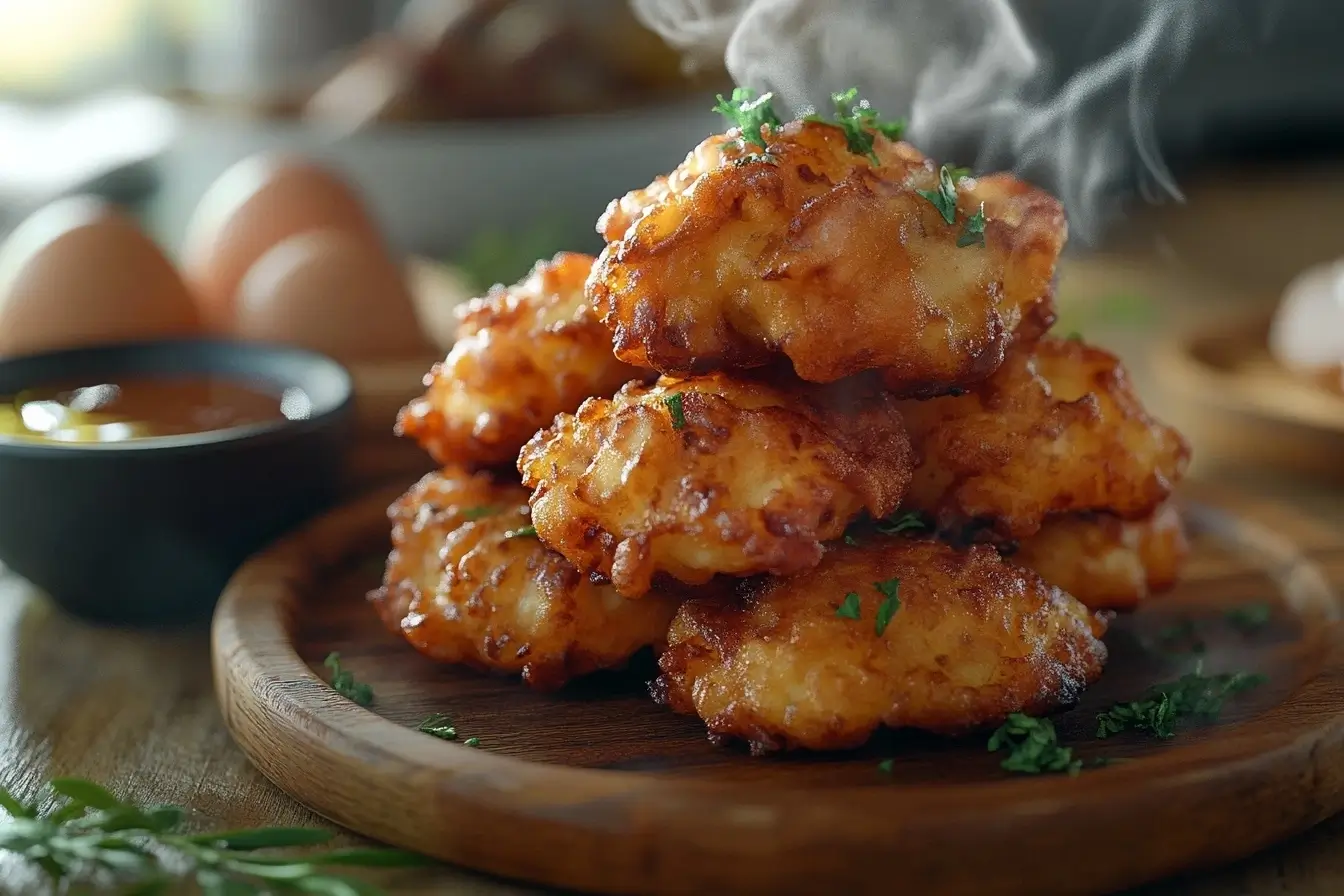Achieving the ideal crispy fritters can feel like a science experiment, but the secret might already be in your pantry. Many home cooks and chefs turn to baking soda for its remarkable ability to improve textures in baked and fried foods. But does it really make fritters crispy? And if so, how can you make the most of it? In this guide, we’ll walk you through everything you need to know about using baking soda for crispy fritters, along with other tricks to ensure golden, crunchy results.
Let’s dive right into understanding the chemistry and practical tips to up your fritter game!
Understanding the Role of Baking Soda in Cooking
What Is Baking Soda?
Baking soda, also known as sodium bicarbonate, is a common pantry staple with multiple uses in cooking and beyond. Chemically, it’s a leavening agent that reacts with acids to produce carbon dioxide gas, helping dough rise and creating a light, airy texture. Additionally, baking soda is recognized for its various household applications and potential health benefits. For more information about its versatility and health-related uses, check out Healthline.
This humble powder reacts with acidic ingredients like buttermilk, yogurt, or vinegar to release carbon dioxide gas. This chemical reaction helps create tiny bubbles in the batter, which means a lighter, crispier fritter once fried.
For detailed steps and expert tips, check out How to Make Perfect Baked Apple Fritters: A Healthier Twist on a Classic Treat.
How Does Baking Soda Work in Batters and Doughs?
It’s not just the fizz that matters! Baking soda raises the batter’s pH, weakening proteins like gluten. A weaker gluten structure translates to a more tender, airy crust. When the batter hits the hot oil, baking soda also promotes browning through the Maillard reaction, giving your fritters that irresistible golden hue.

The Quest for Crispy Fritters
Making fritters with that perfect crunch on the outside while keeping them tender inside feels like hitting the jackpot, doesn’t it? Achieving this ideal texture might seem tricky, but it really boils down to a few key factors. From the batter’s makeup to the frying technique, every detail plays a role in whether your fritters turn out crisp or soggy. Let’s break it down and figure out what really makes fritters crispy.
What Makes Fritters Crispy?
The crispy magic starts with the batter. The balance of ingredients like flour, liquids, and leavening agents determines how the crust forms during frying. A batter with too much moisture might steam rather than fry, leading to a softer texture. Conversely, a thick batter can set quickly in hot oil, giving that crackling crunch we all crave.
Next up is the frying temperature. If the oil isn’t hot enough, your fritters absorb too much grease, resulting in a soggy bite. Too hot, and they might burn before the insides cook through. Keeping the oil at an optimal temperature—usually around 350-375°F (175-190°C)—is the sweet spot for crispy fritters.
Finally, it’s about technique. Ensuring an even coat of batter, not overcrowding the pan, and letting the oil do its work can make all the difference.
Common Ingredients Used to Enhance Crispiness
Certain ingredients are crispy champions. Cornstarch and rice flour are popular because they create a delicate, crisp crust without the chewiness of wheat flour. Baking soda, on the other hand, introduces that bubbly, light texture by releasing carbon dioxide gas during cooking.
Combining these with your regular batter ingredients can give fritters an unmistakable crunch that keeps you coming back for more!
Does Baking Soda Make Fritters Crispy?
When it comes to crispy fritters, baking soda often emerges as the unsung hero. This simple leavening agent does more than just lighten the batter—it plays a key role in achieving that perfect golden crunch.
The Science Behind Baking Soda and Crispiness
Baking soda works wonders by altering the chemistry of your batter. It raises the pH level, which weakens gluten development in the flour. Why does this matter? Gluten can make the batter denser and chewier, which isn’t what you want in a fritter. A weaker gluten structure allows for a lighter, crispier crust.
Additionally, the higher pH promotes the Maillard reaction, a chemical process responsible for browning. This reaction gives fried foods their appetizing color and savory flavor. When baking soda is used correctly, it creates an airy, light batter that crisps beautifully in hot oil.
Studies and Expert Opinions
Culinary experts frequently recommend adding a small amount of baking soda to fritter batter. They note that the gas released by baking soda during cooking creates microbubbles in the batter, contributing to a delicate, crispy texture. However, using too much baking soda can backfire, resulting in an off-putting taste or uneven browning.
Factors Influencing the Effectiveness of Baking Soda
While baking soda can certainly help make fritters crispy, its performance depends on how it’s used. Let’s explore the key factors.
Batter Composition
The ratio of wet to dry ingredients is crucial. Too much liquid dilutes the effect of baking soda, while too much dry flour can lead to a heavy batter. A balanced batter creates the ideal conditions for baking soda to do its job—lightening the texture while helping the crust form evenly.
Cooking Temperature and Technique
Temperature control is everything. Baking soda works best when the oil is hot enough to quickly set the batter, trapping the gas and preventing it from escaping. If the oil is too cool, the batter absorbs excess grease, negating the crispy benefits. On the flip side, overheating can cause the fritters to burn before they cook through.
Interaction with Other Ingredients
Baking soda doesn’t work in isolation; it needs an acidic component to activate. Ingredients like buttermilk, yogurt, or vinegar create the necessary reaction to release carbon dioxide. Without an acidic partner, baking soda remains dormant, and you lose the crispy benefits.
Used thoughtfully, baking soda is a game-changer for fritter crispiness. But as with any recipe, the devil’s in the details. Keep experimenting, and you’ll discover the ideal balance for your crispy fritters!
Other Leavening Agents and Their Effects
While baking soda is a popular choice for making fritters crispy, it’s not the only option. Other leavening agents, such as baking powder and carbonated liquids, also bring unique benefits to the table. Let’s compare how these alternatives stack up.
Baking Powder vs. Baking Soda
Baking powder is essentially baking soda with a built-in acidic component. This means it doesn’t rely on additional acidic ingredients in your batter to activate. Once mixed with liquid and exposed to heat, it produces carbon dioxide gas in two stages—making it a convenient option for consistent results.
Because baking powder creates a steady stream of bubbles during cooking, it can also help fritters achieve a crispier texture. The downside? It might not provide the same level of browning and lightness as baking soda, especially in acidic batters.
Club Soda and Carbonated Water
If you’re looking for a foolproof way to add airiness to your fritter batter, try incorporating carbonated liquids. These naturally bubbly ingredients bring gas into the batter without requiring any chemical reactions. The result? A lighter, fluffier texture and a crispier finish.
For best results, use chilled club soda or sparkling water. The colder temperature slows gluten development, enhancing the crispy crust further. Be careful not to overmix the batter—too much stirring can release the trapped bubbles, reducing their effectiveness.
Adjusting Batter Ingredients for Crispiness
Fine-tuning your batter ingredients can make or break the crispiness of your fritters. Simple tweaks, like swapping flours or managing moisture, can elevate the texture from decent to divine.
Using Cornstarch or Rice Flour
Both cornstarch and rice flour are popular additions to batter because they contain less gluten than wheat flour. Gluten, while useful in bread, can make fried foods overly chewy. These flours, on the other hand, yield a delicate, crisp crust that’s perfect for fritters.
Cornstarch forms a smooth coating that browns beautifully, while rice flour offers an ultra-light, almost shatteringly crispy texture. For the best of both worlds, try a blend of all-purpose flour with a portion of cornstarch or rice flour in your fritter batter.
Managing Moisture Content
Moisture is a crispy fritter’s worst enemy. Excess water in the batter or ingredients can cause steam during frying, softening the crust. To counteract this:
- Pat vegetables or proteins dry before adding them to the batter.
- Avoid overmixing the batter, as this can trap excess liquid.
- Opt for a slightly thicker batter, which adheres better to the ingredients and sets quickly in hot oil.
By carefully adjusting your batter’s ingredients, you’ll be on your way to perfectly crispy fritters every time.
Step-by-Step Guide to Preparing Fritter Batter
Getting the fritter batter just right is the first step to achieving that coveted crispy bite. From selecting the perfect ingredients to mixing them properly, each step matters. Here’s how to set yourself up for success.
Selecting the Right Ingredients
The choice of ingredients can make or break the crispiness of your fritters. For a foolproof batter:
- Flours: Use a mix of all-purpose flour and cornstarch or rice flour. These combinations strike a balance between structure and crispiness.
- Leavening Agents: Add a pinch of baking soda if your batter contains acidic components like buttermilk or yogurt. For neutral batters, baking powder is a safer choice.
- Liquid: Opt for carbonated water or club soda for added lightness. Keep the liquid cold to slow gluten formation, which helps maintain a crispy texture.
Mixing Techniques
Proper mixing is critical to ensure every ingredient does its job effectively.
- Combine all dry ingredients first, including flour, cornstarch, and any leavening agents.
- Gradually add the liquid to avoid lumps, stirring just until combined. Overmixing can lead to a dense batter and less crispiness.
- For extra crunch, let the batter rest for 10-15 minutes before frying. This allows the leavening agents to activate fully.

Frying Techniques for Optimal Crispiness
Even the perfect batter can go wrong if the frying process isn’t handled carefully. Proper oil temperature and post-frying steps are key to locking in that crunch.
Maintaining Oil Temperature
The oil needs to stay consistently hot—between 350-375°F (175-190°C)—to fry fritters to crispy perfection. Here’s why:
- If the oil is too cool, fritters absorb excess oil, resulting in a greasy texture.
- If it’s too hot, the batter browns too quickly, leaving the inside undercooked.
Use a thermometer to monitor the temperature, or test it by dropping a small bit of batter into the oil. If it sizzles and rises quickly, the oil is ready.
Draining and Serving
Once fried, fritters should be drained properly to keep them crisp. Avoid stacking fritters, as trapped steam can soften their exterior. Here’s a quick guide:
| Step | Action | Why It’s Important |
|---|---|---|
| Remove from oil | Use a slotted spoon to lift fritters. | Reduces excess oil clinging to the surface. |
| Place on paper towels | Arrange fritters in a single layer. | Absorbs extra oil for a lighter texture. |
| Serve immediately | Plate the fritters while still warm. | Maintains maximum crispiness. |
Proper frying and serving techniques are the final steps to achieving irresistibly crispy fritters. Follow these tips, and you’ll have a batch of golden, crunchy goodness every time!

Frequently Asked Questions (FAQs)
Can I bake apple fritters?
Yes, you can bake apple fritters! While baking won’t achieve the same level of crispiness as frying, it’s a healthier alternative. To bake apple fritters, preheat your oven to 375°F (190°C), place the fritters on a parchment-lined baking sheet, and brush them lightly with melted butter or oil for a golden finish. Bake for about 15-20 minutes, flipping halfway through, until golden brown.
How to bake apple fritters?
To bake apple fritters, prepare your batter as usual. Drop spoonfuls of batter onto a greased or parchment-lined baking tray. Brush the tops with melted butter to promote browning, then bake in a preheated oven at 375°F (190°C). For added crispiness, broil for the last 2-3 minutes of baking, keeping a close eye to prevent burning. For a complete guide on baking fritters to perfection, visit How to Bake Apple Fritters: Step-by-Step Guide for Delicious Treats.
Can you bake apple fritters instead of frying?
Absolutely! Baking apple fritters is a convenient and less messy option compared to frying. While they may lack the deep crunch that frying provides, baking yields fritters with a softer texture and a golden crust. A light coating of melted butter or oil before baking can help mimic the crispy exterior of fried fritters. For more insights and a detailed comparison, check out Can You Bake Apple Fritters Instead of Frying? A Healthier Alternative.
Why are my fritters not crispy?
There are several reasons your fritters might not be crispy:
- The oil temperature may have been too low, causing the fritters to absorb excess oil.
- The batter could have too much liquid, creating steam and softening the crust.
- Overcrowding the pan reduces oil temperature, preventing a crisp exterior.
Why are my fritters raw in the middle?
If your fritters are raw inside, they may be too thick or large, which makes it difficult for the heat to penetrate the center. Try flattening them slightly or reducing their size. Additionally, ensure the oil is at the right temperature—too hot, and the outside will brown before the inside cooks.
Why did my apple fritters get soggy?
Apple fritters can become soggy if they’re stacked after frying, as steam trapped between layers softens the crust. To avoid this, arrange them in a single layer on paper towels to drain excess oil. Serving fritters immediately is also crucial for maintaining their crispiness. If you’ve struggled with this problem, check out Why Did My Apple Fritters Get Soggy? Causes and Fixes Explained for detailed solutions and tips to keep your fritters crispy every time.
Summarizing the Role of Baking Soda in Fritter Preparation
When it comes to making fritters crispy, baking soda truly holds its own. Its alkaline properties not only weaken gluten in the batter but also encourage the Maillard reaction, giving fritters their golden-brown hue. By producing carbon dioxide gas when combined with acidic ingredients, it creates bubbles that lighten the batter, resulting in an airy and crispy texture.
That said, baking soda is just one piece of the puzzle. Its effectiveness depends on how well it’s balanced within the batter. The proper ratio of wet and dry ingredients is key to ensuring that the batter sets up properly during frying. Without this balance, even the best leavening agent can fall short.
Frying techniques also play a critical role. If the oil temperature isn’t managed correctly, baking soda’s benefits can be negated, leaving you with fritters that are either greasy or undercooked. By pairing baking soda with the right ingredients—like cornstarch or rice flour—and maintaining consistent frying practices, you can elevate your fritters from average to extraordinary.
Ultimately, baking soda is an essential tool in your crispy-fritter toolkit, but its true potential shines when used thoughtfully alongside other techniques and ingredients.
Final Thoughts on Achieving the Perfect Crispy Fritter
Creating the perfect fritter involves a mix of science, technique, and experimentation. While baking soda is a valuable asset, it’s worth asking, does baking soda make fritters crispy on its own? The answer lies in pairing it with other methods. Adding cornstarch or rice flour to the batter can create a thinner, lighter crust, while using carbonated water infuses extra bubbles for a delicate crunch.
Frying, of course, requires its own set of skills. Keeping oil at the right temperature ensures that fritters crisp without absorbing excess grease. Draining them properly on paper towels and serving immediately further preserves their crispy texture.
But the beauty of making fritters lies in the freedom to adapt. Depending on your preferences, you can tweak the ingredients or try different leavening agents like baking powder. Still, the question remains: does baking soda make fritters crispy every time? With the right combination of batter, temperature, and frying technique, baking soda can be the key to achieving that perfect, golden crunch.
So, whether you’re frying up a batch of apple fritters or experimenting with savory options, the path to crispy perfection is just a whisk and a fry away. Happy cooking!

